Lunges with press. Lunges are an exercise for creating perfect legs. Back lunges with barbell
Lunges can rightfully be called not only a basic strength exercise, but also an ideal exercise to perform in any environment: at home, during a break at the workplace, in nature and in the gym. This exercise helps create beautiful buttocks and is recommended to be performed not only by the fair half of humanity to create seductive forms, but also by the stronger half.
What do lunges pump?
When performing lunges, two joints are primarily involved: the knee and hip. In this case, the following muscles come into play:
- buttocks;
- shins;
- hamstrings;
- quadriceps thighs;
- calf;
- synergists;
- soleus;
- abdominals;
- backs.
The main load falls on the muscles of the buttocks. However, it is worth noting that with a long step, the gluteal muscles are loaded to a greater extent, while short lunges – on the quadriceps of the thighs.
The advantage of lunges is that they work a large number of muscles while using light weights. Which, with the correct technique, reduces the likelihood of injury, but works well for the lower body and promotes harmonious development.
Correct exercise technique
Regardless of the apparent simplicity of the exercise, it is necessary to warm up before performing lunges to avoid muscle strain and injury to the spine.
Joint gymnastics are suitable for warming up:
- perform rotations of the head, arms, shoulders, hip and knee joints;
- make all kinds of tilts;
- It also doesn’t hurt to run in place with high legs and jump in place or with a skipping rope.
First, you should learn how to properly do lunges without weights in the classic version.
Initial position:
- Feet shoulder-width apart parallel to each other.
- Keep your back straight.
- The gaze is directed forward.
- Hands on hips.
- Head and back in the same plane.
- Shoulders are separated.
- Take a couple of deep breaths in and out.
Performance:
- While inhaling, step forward with one leg.
- Keep your body perpendicular to the floor.
- Shift your body weight to your front leg.
- The leg in front rests on the entire foot.
- The foot is back only on the toes, the heel looks up.
- The knee of the back leg almost touches the floor.
- Keep both knees at right angles.
- Pull in your stomach.
- Stretch the top of your head up.
- Spread your shoulders and lower them down.
 Return to starting position:
Return to starting position:
- As you exhale, transfer your body weight to your back leg.
- Extend your supporting leg and stand in the starting position.
While inhaling, perform the exercise with the other leg.
Other lunge options:
- Lateral (to the side) - engages the adductor and abductor muscles of the thighs;
- Reverse lunges (back lunges) are actually no different from classic ones;
- Bulgarian (with your back to the support on which the leg rests, resting on the instep) - first, all repetitions are performed on one leg, then on the other;
- Walking with lunges maximizes the use of stabilizing muscles and develops coordination.
You can also divide the technique into lunges with return (stomping on the spot) and walking with lunges. When walking, it is advisable to use an extended step, otherwise there is a high risk of losing balance, falling and injury.
When performing any version of the exercise, you should follow the general recommendations, relying on the technique of performing classic lunges.
- Keep your feet shoulder-width apart to avoid falling face down.
- Fix your lower back.
- Always look forward in front of you, do not lower your chin.
- The stomach does not touch the supporting leg.
- At first, you can use support - hold on with your hand.
- It is necessary to increase the load gradually.
An acceptable number of approaches is from 3 to 5.
Lunges with dumbbells and a barbell are an excellent addition to leg training on a machine, but they allow you to work a larger number of stabilizing muscles and quickly achieve harmonious development.
With dumbbells
 If you have mastered the technique of performing classic lunges, you can begin performing the exercise with dumbbells.
If you have mastered the technique of performing classic lunges, you can begin performing the exercise with dumbbells.
It is believed that proper execution of lunges with dumbbells as weights is more suitable for women.
There are two options for performing the exercise.
First: classic - arms with dumbbells are extended along the body, which makes it easier to maintain balance.
Second: dumbbells in bent arms on the shoulders. The technique is the same as with a barbell and it is more difficult to maintain balance.
Tip: turn your toes slightly inward, and hold the dumbbells with your entire hand.
With a barbell
It is believed that lunges with a barbell on the shoulders are more suitable for men - with this placement of the weight, the core stabilizer muscles are stronger.
The technique is the same as with dumbbells, but it requires a lot of concentration - you won’t be able to get rid of the barbell during the exercise like you would with dumbbells if something goes wrong. It is necessary to monitor your breathing and do the exercise without jerking. When performing, look forward, not down.
In Smith
 The quadriceps muscle of the thigh is well worked out when performing lunges in the Smith machine. Exercise not only pumps up the muscle, but also improves strength. Used in training by bodybuilders, powerlifters and other athletes.
The quadriceps muscle of the thigh is well worked out when performing lunges in the Smith machine. Exercise not only pumps up the muscle, but also improves strength. Used in training by bodybuilders, powerlifters and other athletes.
The pace is slow with a high number of repetitions.
Thanks to the use of the simulator, the load on the spine is reduced.
Performing lunges on a Smith machine:
- Considering the possibility of displacement when performing the exercise, it is convenient to position the bench (you don’t have to use an elevation, but with it the load on the supporting leg is higher).
- Using a close grip, grab the bar and place it on the top of your trapezius.
- Bend your back in the lumbar region. The buttocks should be at such a level that the knee forms a right angle.
- When bending your leg, you need to make sure that your knee does not protrude beyond your toe.
Hi all! Today I will tell you how to do lunges correctly, which type of lunges affects which muscle groups, and which lunges will help you.
Lunges forward
WORKS: quadriceps (front thigh)
Technique:
- When taking a step forward, you must ensure that the knee of your working leg does not go beyond the line of your toe.
- The knee of the front leg should form a 90 degree angle.
- The knee of the back leg goes to the floor and also forms a 90-degree angle.
- Your back should remain straight throughout the entire exercise. It is very important to keep your body perpendicular to the floor.
- That is, you need to distribute your weight so that it falls on your heel.
- Having returned to the IP, we do not stand for a long time or rest, but immediately do the next lunge, adhering to the same rules of technique for performing this exercise. Then we change the leg and do the same on the other leg.
Classic Back Lunge
WORKING:
Technique:
- Starting position – legs together, back straight.
- The knee of the front leg should form a 90 degree angle.
- FORWARD, and move the pelvis as far as possible BACK! This is necessary in order to shift the emphasis specifically to the gluteal muscles. But be sure to ensure that the knee of your front leg does not go beyond the toe line.
- When returning to the starting position, push through your heel.
Amplitude back lunges
WORKING: gluteus maximus, medius and minimus muscles
A slightly more complicated version of back lunges is when the angle at the knee of the back leg is not 90 degrees, but greater, or the leg is completely straight. This adds more range to the exercise, allowing your working leg's hip to drop even lower, allowing the muscles to stretch even further.
Technique:
- Starting position – legs together, back straight.
- When taking a step back, make sure that the knee of your front leg does not go beyond your toe.
- The leg of the hind leg is straight or the angle at the knee is obtuse.
- We keep our back straight, but at the same time tilt our body FORWARD, and move the pelvis as far as possible BACK, as in the previous exercise!
- When returning to the starting position, push through your heel.
- Change leg and repeat on the other leg.
Lunges in place with emphasis on the buttocks
WORKING: gluteus maximus, medius and minimus muscles.
Here we do not move or put our foot down, but stand in one place, lowering our knee down.
Execution technique This type of attack is practically no different from the previous version.
- We make sure that the knee of the front leg does not go beyond the toe.
- Make sure that the knee in front of the standing leg forms an angle of 90 degrees.
- We tilt the body forward, but do not round the lower back.
- We move the pelvis back.
- The foot of the back leg is on the toe all the time, do not lower the heel to the floor.
Lunges in place with emphasis on the outer thigh
WORKING: gluteus maximus, medius and minimus + breeches area (outer thigh)
Execution technique This exercise is the same as the previous version. The only difference is in the placement of the feet:
- We turn the toe of the front leg inward, focusing on the outer part of the thigh.
- And we place the toe of the hind leg a little clubfoot.
And in this position we do squats down, lowering the knee to the floor.
This placement of the feet allows you to better feel the gluteus medius muscle and the outer side of the thigh, where “pop ears” usually grow.
Side Lunges
WORKING: gluteus maximus, medius and minimus muscles.
Technique:
- We lunge with one leg to the side, without rounding our back at the lower back.
- We move our pelvis back, imagining that we are sitting on the tip of a chair.
- The knee does not go beyond the line of the toe.
- When returning to the starting position, we push off the floor with our entire foot, but we still try to transfer the body weight to the heel.
These were the main types of lunges that I wanted to tell you about today.
I am attaching a video where I again tell and show in detail, how to do lunges correctly.
Enjoy watching everyone =)
Lord of the entire site and fitness trainer | more details >>
Genus. 1984 Trained since 1999 Trained since 2007. Candidate of Masters in powerlifting. Champion of Russia and South Russia according to AWPC. Champion of the Krasnodar region according to IPF. 1st category in weightlifting. 2-time winner of the Krasnodar Territory championship in t/a. Author of more than 700 articles on fitness and amateur athletics. Author and co-author of 5 books.
Place in : out of competition ()
Date of: 2015-09-12 Views: 31 116 Grade: 5.0
 This article will describe 7 variations of lunges. All these options have one thing in common: the load goes first to one side and then to the other. This is the essence of any attack. This asymmetrical load allows you to put more stress on the muscles of the hips and buttocks, which people actively use. Before the analysis, I want to say that almost all options can be done with three equipment (dumbbells, barbell, Smith machine). For the muscles of the hips and buttocks, it doesn’t matter which apparatus you choose. It's a matter of taste. But each apparatus has its own pros and cons when performing this exercise. Dumbbells. It is more convenient to maintain balance with them and the axial load on the back is much less than with a barbell. But your arms get tired and the weights with them are a little lighter than with a barbell or Smith. However, due to the fact that dumbbells need to be held in your hands, energy costs are maximum. It's good for losing weight. Barbell. There is a greater axial load on the back and it is more difficult to maintain balance. But you can take more weight than with dumbbells. This means putting more strain on the muscles. Smith machine. It is very convenient to keep balance. And in general, the technique of execution is significantly easier. You can take a lot of weight, but just like with a barbell, there is an axial load. However, this projectile is least suitable for weight loss. Since there is no need to maintain balance, the stabilizer muscles are much less involved in the work. This means less energy is wasted. And to lose weight we need maximum energy expenditure.
This article will describe 7 variations of lunges. All these options have one thing in common: the load goes first to one side and then to the other. This is the essence of any attack. This asymmetrical load allows you to put more stress on the muscles of the hips and buttocks, which people actively use. Before the analysis, I want to say that almost all options can be done with three equipment (dumbbells, barbell, Smith machine). For the muscles of the hips and buttocks, it doesn’t matter which apparatus you choose. It's a matter of taste. But each apparatus has its own pros and cons when performing this exercise. Dumbbells. It is more convenient to maintain balance with them and the axial load on the back is much less than with a barbell. But your arms get tired and the weights with them are a little lighter than with a barbell or Smith. However, due to the fact that dumbbells need to be held in your hands, energy costs are maximum. It's good for losing weight. Barbell. There is a greater axial load on the back and it is more difficult to maintain balance. But you can take more weight than with dumbbells. This means putting more strain on the muscles. Smith machine. It is very convenient to keep balance. And in general, the technique of execution is significantly easier. You can take a lot of weight, but just like with a barbell, there is an axial load. However, this projectile is least suitable for weight loss. Since there is no need to maintain balance, the stabilizer muscles are much less involved in the work. This means less energy is wasted. And to lose weight we need maximum energy expenditure. 1. Static (classic) lunges
The technique of such lunges is the simplest and is perfect for beginners. Here we place our legs in the starting position and simply squat until we need to change legs. Since the load is placed first on one leg and then on the other, this version of lunges is well suited for gaining weight in general. A minimum of energy is spent, and the buttocks are loaded quite quickly and strongly.2. Dynamic lunges
Watch from 1.20. What distinguishes them from static lunges is that here a foot step is taken before each repetition. This increases energy consumption. If the goal of your training is weight loss or relief, then you need to alternate legs after each repetition. If you want to gain weight, it is better to do the required number of repetitions with one leg at the beginning, and then move on to the next leg. By the way, it doesn’t matter whether you take a step forward or backward.3. Lunges - walking
Watch from 1.20. This is a modified version of the previous method. Its disadvantage is that it requires a lot of space, since you need to walk back and forth. However, this version of lunges is best suited for weight loss and relief, since a lot of energy is spent and a large number of stabilizer muscles are used. But this option is quite difficult to implement. It is difficult to maintain balance here and beginners will have a difficult time at first.4. Lunges with front leg on a stand
Watch from 2.20. The forward leg is placed on a stand so that you can stretch your buttocks further. The stand should not be high. Maximum 20 cm. This is quite enough for you to go lower than usual and your buttocks will receive a huge load. Since you won’t be able to walk with this option, but will only be able to do static lunges, this option is ideal for those who want to gain weight. And especially in the buttocks.5. Lunges with the back leg on a stand (Bulgarian)
Similar to the previous option, but the back leg is placed on the stand. And here we need a higher stand. A regular horizontal bench will work well. With this option, the load falls almost entirely on the front (working) leg. And the back leg simply serves to maintain balance. In this case, you won’t be able to squat low and stretch your buttock too much. That is, the load will fall more on the thigh rather than on the buttock. This option is also more suitable for those who are gaining weight. But I would call this option “for everyone.” It is quite difficult to do, and it does not provide any unique advantages.6. Oblique lunges
A type of dynamic lunge. The step goes backwards and obliquely. My personal opinion is that I don’t see any point in this additional diagonal movement. This further complicates movement, puts the hip joint in an awkward position, and has no advantages. The glutes and thighs work exactly the same as in regular dynamic lunges. In general, I do not use this option in my practice.7. Side lunges
As you can see, the concept here is completely different. The lunge is done to the side, not forward. With this option, the buttocks also work. But the inner side of the thigh is still actively involved in the work. The disadvantage of this method is that you need to have a good stretch, since a good effect will only be achieved if you go quite low. You can do it on one leg first, and then on the other (better for mass). Or you can roll from foot to foot (better for weight loss.). But the roll must be performed with full straightening of the legs and back in the middle of the movement.conclusions
If you are a beginner, start with classic or dynamic lunges. Then, if your goal is weight loss, then lean more on dynamic or walking lunges (if space in the gym allows). If your goal is mass, then use static ones or with the front leg on a stand. Side lunges can be used for any purpose. Other options are at your discretion. In general, whether your lunges will be aimed at losing weight or gaining mass is largely decided by the weight of the projectile and the number of repetitions. This means that all options can be used for both purposes. It’s just that some options are easier to adapt for weight loss, and some for mass. And of course, in the comments they will ask me: So which option is best for pumping up the buttocks? Alas, everything is purely individual, and only through experimentation can you understand for yourself how you feel your butt best. But from my personal experience, I can say that in most cases, static lunges, dynamic lunges and with the front leg on a stand are better suited. This is specifically about pumping up the buttocks. Good luck!By the way, you can order yourself
Lunges with dumbbells are considered one of the most effective elements for working out the buttocks and thighs. During the training, the load is concentrated on one leg, allowing proper attention to the muscles of each leg. And weights in the form of dumbbells not only provide additional load, but also help maintain balance. Today we will tell you about what muscles work during the exercise, types and techniques, and how to properly do lunges with dumbbells for the best effect.
Benefits of exercise
To perform the element, you need to take the starting position and extend one leg to the side in a squat. At the same time, we take a step to the side with one leg, and at the same time extend the other as far as possible. Bend the supporting leg at the knee. Pull your arms with dumbbells to your chest at the lowest point. The toe of the supporting leg points straight forward.
Bulgarian lunges
The peculiarity of this element is that when lunging forward, the supporting leg is on a hill. The starting position in this case will be this: we stand up straight, place the toe of one foot on a bench or other hill. We begin to do a regular lunge forward. The step should not exceed 50-60 cm. Watch your knee: it should not go beyond the line of the toe.
During the execution of the element, the femoral biceps is fully stretched and contracted. Blood flow to the buttocks also increases.
Dumbbell scissor lunges or cross lunges
This is a rare variation of the element, which consists in bringing the front leg to the opposite side. In this case, the leg must be brought to the level of the opposite shoulder. In this case, the knee cannot be brought inward. Cross lunges are great for working the medial head of the quadriceps. And the shortened range of motion ensures good blood supply to active muscles.
Each of the listed types of lunges is useful and effective in its own way. Therefore, it is recommended to perform them all within one workout. As a result, all the muscles of the buttocks and thighs will be loaded, which will make this part of the body beautiful in a fairly short time. And holding dumbbells during training will develop grip strength and strengthen ligaments and tendons.
In addition to the above types of lunges, you can improve them a little more. For example, do it while lunging “stepping” onto the surface.

Contraindications and possibility of injury when performing the exercise
The most vulnerable area when lunging is the knee. The exercise can be done independently with or without weights. This is due to the fact that the entire load is concentrated on one leg. If you do the exercise incorrectly, you can easily injure your knee. Ideally, when lunging, the front of the shin and the back of the foot should form a right angle.
The second risk associated with lunges is sprains. This can happen as a result of neglecting to warm up before training. Unwarmed muscles are easily subject to sprains and tears.
The third thing you need to pay attention to is the spine. The back should always remain straight, maintaining only the natural arch in the lower back. When using heavy dumbbells, the body will lower down, further loading the spine. Therefore, it is better not to get carried away with heavy weights.
Lunges are contraindicated for the following persons:
- having varicose veins in the legs;
- suffering from pain in the knee area.
The exercise should be performed with caution if you have problems with the spine, especially osteochondrosis and pain in the lumbar region. It is also better to refrain from training if you have fresh knee injuries.
Let’s devote a few words to the main mistakes when performing the exercise and their consequences:
- collapsing the body forward is fraught with possible injury to the lower back;
- placing the knee of the supporting leg on the floor will make the training ineffective, because will allow the muscles to relax;
- Failure to maintain a right angle with the knee of the working leg can injure the knee joints.

Exercise Alternative
If for a number of reasons, for example related to problems with the knee joints, lunges are not suitable for you, they can be replaced with equally effective exercises:
| Leg abduction with swings | Swings can be done both forward and backward, and to the sides. There is no stress on the knees, but the hips work. |
| Gluteal Bridge | It will completely replace lunges for working the buttocks. |
| Walking to higher ground. | Instead of lunges, you can do regular steps. To do this, we use any elevation, ideally use a step platform. We simply step onto the platform with one foot, placing the other one towards it. You can change everything in the exercise: the width of the steps, add a knee or straight leg lift, enhance the effect by stepping behind the platform, and so on. |
| Single leg squats | A great alternative to cross lunges. We take a “pistol” shape, extending one leg, and begin to squat. The same muscles work as during lunges. A sense of control and balance also develops. |
| Jumping to higher ground | The elements are similar to walking, but “in flight”. Spring jumps are not as effective at working the glutes, but can be an excellent complement to, for example, side lunges, which do not put as much stress on the knee. |
| Sissy squats | Squats provide an effective load on the hips and buttocks, but they are an unusual option. There is such an exercise as sissy squats, in which you need to direct your pelvis and knees forward and your body back. In this case, you need to lean not on the heel, but on the toe. To maintain balance, you will need a hand rest. The element must be performed until the biceps of the thigh touches the calf muscle, and the knees are maximally extended beyond the level of the toes. |
Conclusion
Lunges with dumbbells are a fairly common exercise that can be used to effectively work out your hips and buttocks at home. Regularly pay attention to the element, and an elastic heel is guaranteed to you!



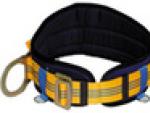
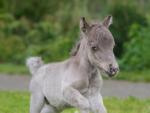
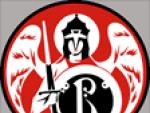

 What to do if the fish get sick?
What to do if the fish get sick? Shooting at aerial targets Shooting with conscious aiming
Shooting at aerial targets Shooting with conscious aiming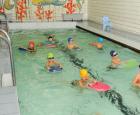 Children's and family inflatable pools Intex How to overcome the fear of water
Children's and family inflatable pools Intex How to overcome the fear of water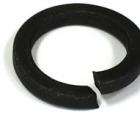 Spring lock washer Offer description and product characteristics
Spring lock washer Offer description and product characteristics